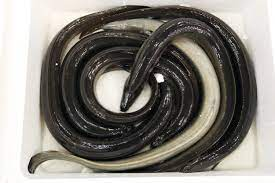While taking a walk along the coastline of Hilton Head Island in South Carolina last week, Joe Grondalski and Shannon Ruff spotted something out of the ordinary: a small head poking out of the sand.
Source: Newsweek
When Grondalski and Ruff approached, the head withdrew before emerging again. Silver in color, it repeatedly opened and closed its mouth as the couple watched in bafflement, according to local newspaper The Island Packet.
“We’ve been living here maybe five years, but we’ve been coming to Hilton Head since the early ’80s, and we’ve never seen anything like this,” Grondalski told the Packet. He and Ruff saw an additional 10 or 12 heads of the same species during the course of their walk.
Describing himself and Ruff as “stumped,” Grondalski took several photos and a video of the mysterious animal and shared one on Facebook in the hopes that another Hilton Head resident would recognize it, according to the Packet. While plenty commented on the animal’s appearance, calling it “scary-looking” and comparing it to the antagonists of the 1990 movie Tremors, none had any idea what it was before the South Carolina Department of Natural Resources (DNR) weighed in, the Packet reports.
The head belonged to what the DNR identified as a shrimp eel, a type of snake eel. The burrowing behavior Grondalski and Ruff observed is a trademark characteristic, DNR spokesperson Erin Weeks wrote to Newsweek. Rather than drill themselves headfirst into the sediment like many other benthic, or bottom-dwelling, organisms, however, the eels use their tails to dig holes, she said.
While shrimp eels are native to the Carolinas, they are rarely seen and little studied because they spend most of their lives embedded in the sea floor, Weeks said. When Grondalski’s photos and videos were shared among DNR employees, several resident biologists reported that they had never encountered the subject before.
“There’s an astounding diversity of fish and invertebrates along our coast, and many are not well studied or understood because they’re difficult to capture, rare, or less economically/culturally important than other species (such as seafood species or popular gamefish species),” Weeks said.
Shrimp eels are not dangerous to humans, but the DNR always recommends “appreciating animals from a distance” rather than trying to handle them, she added.
Southerners are no stranger to the sudden appearance of bizarre sea creatures and substances on their beaches. Several other incidents of a similar nature have made the news this summer. In March, Jennifer Baltazar’s son stepped on an animal that resembled an eyeball on Mustang Island in Texas. The animal, Jace Tunnell, the director of the Mission-Aransas National Estuarine Research Reserve, told MySA.com, was a Rhizophysa eysenhardti, a close relative of the Portuguese man o’ war. In May, North Carolina’s Cape Lookout National Seashore shared a photo of a mysterious mass that had multiple pockets filled with small white spheres and asked commenters to take a stab at identifying it. The answer? The egg sacs of several squids.
Source: Newsweek

































Leave a Comment
You must be logged in to post a comment.